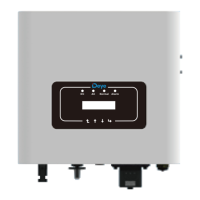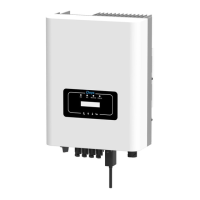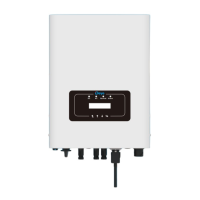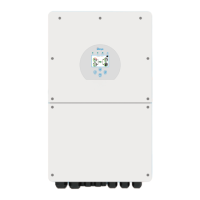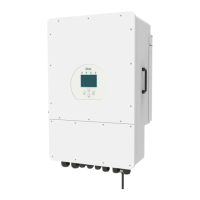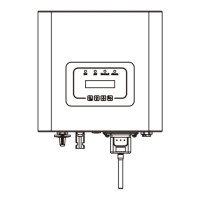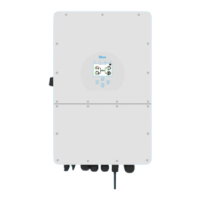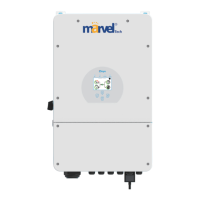
Do you have a question about the Deye SUN-16K-SG01LP1-AU-AM3 and is the answer not in the manual?
| Model | SUN-16K-SG01LP1-AU-AM3 |
|---|---|
| Type | Hybrid Inverter |
| Rated Output Power | 16000 W |
| Max. DC Input Power | 20800 W |
| Max. PV Input Power | 20800 W |
| Max DC Input Voltage | 1000 V |
| Max. PV Input Voltage | 1000 V |
| Number of MPPT Trackers | 2 |
| Number of MPPT | 2 |
| Max. Input Current per MPPT | 26 A |
| Cooling Method | Smart Cooling |
| Cooling | Smart Cooling |
| Protection Class | IP65 |
| Protection Degree | IP65 |
| Rated AC Output Power | 16000 W |
| Power Factor | 0.8 leading to 0.8 lagging |
| THDi | <3% |
| AC Grid Frequency Range | 50/60Hz |
| AC Output Frequency | 50/60Hz |
| Operating Temperature Range | -25°C to 60°C |
| MPPT Voltage Range | 200 V - 850 V |
| MPPT Range | 200 V - 850 V |
| Max DC Input Current | 26A/26A |
| Max. AC Output Power | 17600 W |
| Rated AC Voltage | 230Vac / 400Vac, 3L/N/PE |
| AC Voltage Range | 180-280Vac (per phase) |
| AC Output Voltage | 230Vac / 400Vac, 3L/N/PE |
| Battery Type | Lithium-ion |
| Max. Charging Current | 50 A |
| Max. Discharging Current | 50 A |
| Communication | RS485 |
Crucial safety warnings regarding electrical hazards, high temperatures, proper handling, and disposal procedures.
Detailed description of the hybrid inverter's functions, components, indicators, and key features.
Critical instructions and site selection criteria for safely mounting the hybrid inverter.
Detailed steps for connecting the battery to the inverter, including cable specifications and torque values.
Instructions for connecting the inverter to the grid and backup load, including AC breaker requirements.
Guidelines for connecting PV modules, emphasizing DC breaker installation and recommended cable sizes for safety.
Criteria for selecting PV modules and detailed steps for their electrical connection to the inverter.
Diagrams illustrating the proper connection of Current Transformers (CTs) and energy meters for monitoring.
Mandatory earth connection procedures and optional Wi-Fi connectivity setup for monitoring.
Wiring diagrams showcasing different system configurations for grid-tied and off-grid operation.
Step-by-step instructions for powering the inverter on and off, including system considerations.
Adjusting fundamental settings like time, beep, auto-dim, and factory reset procedures.
Settings for battery type, capacity, charging, and discharge parameters for optimal performance.
Setting up various operational modes like Selling First, Zero Export, and Grid Peak Shaving.
Details on time-of-use scheduling and power source priorities within different work modes.
Choosing the correct grid standard and parameters based on local regulations and grid codes.
A comprehensive list of error codes, their descriptions, and recommended troubleshooting steps.

